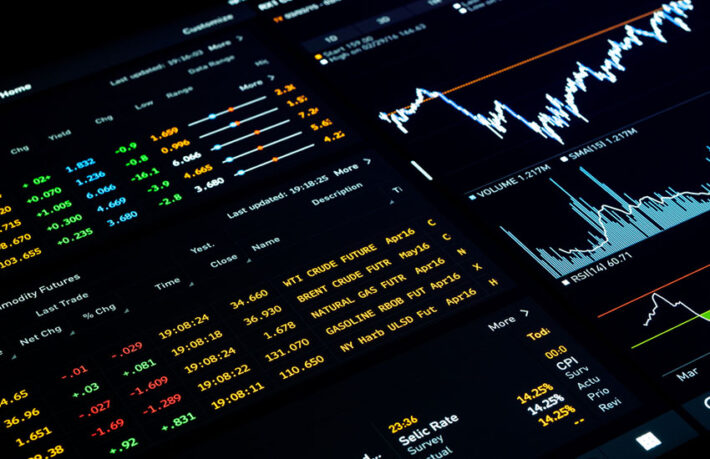Forex 101: What Every Trader Should Know About Currency Pairs

In the foreign exchange (forex) market, all transactions involve the simultaneous exchange of one currency for another. This is why currencies are always quoted and traded in pairs—when you buy one currency, you are inherently selling another. A currency pair reflects the value of one currency relative to another. For example, in the EUR/USD pair, the price indicates how many U.S. dollars (USD) are needed to purchase one euro (EUR). If the pair is trading at 1.1000, one euro is worth 1.10 U.S. dollars. This pricing structure allows traders to speculate on the relative strength or weakness of one currency against another. Understanding how currency pairs work is fundamental to successful forex trading. Every trader—whether beginner or experienced—must become proficient in interpreting currency pairs, as they are the basis for all forex transactions. Their movement is influenced by economic indicators, trading volume, and geopolitical developments. In this guide, we’ll examine the structure of currency pairs, the various categories available for trading, what drives their movement, and how to choose pairs that align with your trading strategy.
Components of a Currency Pair
A currency pair consists of two elements: the base currency and the quote currency. The base currency is the first currency listed in the pair. It is the currency you are buying or selling. The quote currency (or counter currency) is the second in the pair. It shows how much of the quote currency is needed to buy one unit of the base currency. Using EUR/USD as an example: EUR is the base currency. USD is the quote currency. A price of 1.1000 means 1 euro equals 1.10 U.S. dollars. When you go long on EUR/USD, you’re buying euros and selling dollars. When you go short, you’re selling euros and buying dollars.
How Prices Work: Bid, Ask, and the Cost of Trading
The bid price is what buyers are willing to pay (what you receive if you sell). The ask price is what sellers are asking (what you pay if you buy). The spread is the difference between the bid and ask and represents a trading cost. For instance, if EUR/USD has a bid of 1.0998 and an ask of 1.1000, the spread is 2 pips. Major pairs generally offer lower spreads due to high liquidity. Understanding these components enables traders to manage entries, assess costs, and calculate potential profits or losses with greater precision.
Types of Currency Pairs
Currency pairs are generally grouped into three categories: major pairs, minor pairs, and exotic pairs. Each has unique characteristics in terms of liquidity, volatility, and trading cost.
Major Pairs
Major pairs are the most liquid and widely traded. They always include the U.S. dollar (USD) and offer tight spreads and deep liquidity. Common examples: EUR/USD (Euro / U.S. Dollar), GBP/USD (British Pound / U.S. Dollar), USD/JPY (U.S. Dollar / Japanese Yen), USD/CHF (U.S. Dollar / Swiss Franc), AUD/USD (Australian Dollar / U.S. Dollar), USD/CAD (U.S. Dollar / Canadian Dollar). These pairs are ideal for active traders due to their stability and low transaction costs.
Minor Pairs
Minor pairs (cross-currency pairs) do not include the U.S. dollar but consist of other major currencies. Examples: EUR/GBP (Euro / British Pound), EUR/JPY (Euro / Japanese Yen), GBP/JPY (British Pound / Japanese Yen), AUD/NZD (Australian Dollar / New Zealand Dollar). They typically have wider spreads than majors but still offer solid trading opportunities—especially when regional economic data is in focus.
Exotic Pairs
Exotic pairs combine a major currency with a currency from an emerging or smaller economy. Examples: USD/TRY (U.S. Dollar / Turkish Lira), EUR/SEK (Euro / Swedish Krona), USD/ZAR (U.S. Dollar / South African Rand), GBP/MXN (British Pound / Mexican Peso). While exotics can offer significant price swings and potential rewards, they come with higher risk due to lower liquidity and greater sensitivity to political or economic instability. Choosing the right category depends on your risk appetite, trading objectives, and familiarity with the market.
How Currency Pairs Move
Currency pair movements are driven by the relative strength or weakness of one currency compared to the other. These fluctuations are influenced by several key factors:
Interest Rate Differentials
Currencies with higher interest rates tend to attract capital flows, potentially appreciating in value. For example, if the Federal Reserve raises rates while the European Central Bank does not, the U.S. dollar may strengthen against the euro.
Economic Data
Macroeconomic indicators such as GDP growth, employment data, inflation, and retail sales can influence a currency’s value. Strong data typically supports a stronger currency, while weak data can lead to depreciation.
Geopolitical Events
Events like elections, conflicts, or trade negotiations can cause rapid and sometimes unpredictable price movements. Political uncertainty often leads to currency weakness, while stability may attract investors.
Market Sentiment
Short-term moves are often driven by trader sentiment. In risk-on environments, investors may favor higher-yielding or emerging market currencies. In risk-off scenarios, safe-haven currencies such as the USD or CHF are preferred.
Bullish vs. Bearish Movements
A bullish move indicates the base currency is gaining strength against the quote. A bearish move indicates the base currency is weakening. For example, if GBP/USD rises from 1.2500 to 1.2700, the British pound is strengthening versus the U.S. dollar. Traders use technical and fundamental analysis to anticipate these movements and make informed decisions.
Choosing the Right Currency Pairs to Trade
With a wide selection of currency pairs, deciding where to focus can significantly impact trading performance—especially for beginners.
Key Factors to Consider
Volatility: Pairs like GBP/JPY tend to be more volatile and offer larger intraday movements, which may suit short-term traders. More stable pairs like EUR/USD are often preferred by beginners.
Liquidity: Highly liquid pairs such as EUR/USD and USD/JPY offer tighter spreads and faster execution. Exotic pairs may involve higher costs and slippage.
Trading Hours: Choose pairs aligned with your trading schedule. EUR/USD is most active during London and New York sessions, while AUD/JPY may be better suited for Asian session traders.
Correlation: Be aware of how pairs move in relation to one another. For example, EUR/USD and GBP/USD often move together, while EUR/USD and USD/CHF typically show inverse behavior.
Tip for Beginners
Start with one or two major pairs to learn how they behave, manage risk, and refine your strategy. As confidence grows, explore minors and exotics based on your evolving objectives.
Conclusion: The Importance of Currency Pairs in Forex
Currency pairs form the foundation of forex trading. They define how traders interact with the market, analyze trends, and make decisions. From entry-level strategies to advanced portfolio diversification, a solid understanding of currency pairs is essential. By learning how currency pairs are structured, how they move, and how to select the right ones for your strategy, you gain a vital edge in navigating the forex market. Whether you’re trading short-term fluctuations or building long-term exposure, currency pairs remain at the core of every transaction and every trading success.


